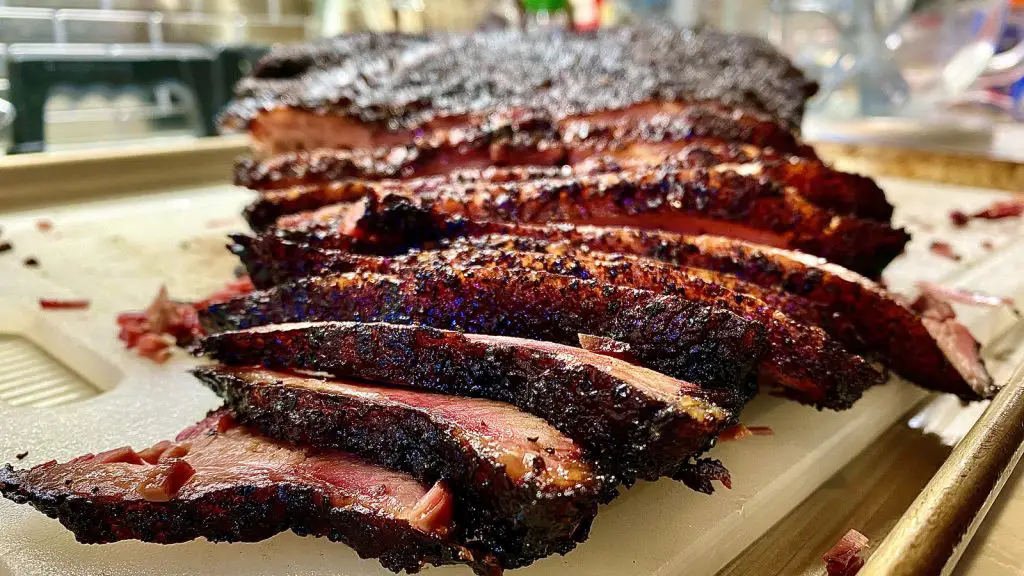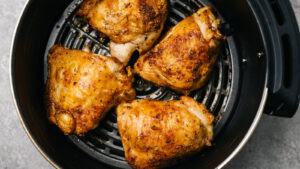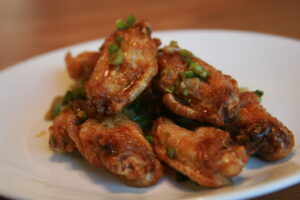Creating an award-winning baby back rib rub is a quest for many barbecue enthusiasts, aiming to achieve the perfect balance of flavors that will elevate their ribs to a competition-worthy level. This article will guide you through the process of creating an exceptional rub, incorporating expert tips and a carefully crafted recipe that combines sweet, savory, and spicy elements to create a complex flavor profile that enhances the natural taste of the meat.
The Philosophy Behind the Perfect Rub
Before diving into the specifics, it’s important to understand what makes a rub “award-winning.” The key lies in achieving a balance of flavors that complement the meat without overpowering it. A great rub should create a crust or “bark” on the ribs, adding texture and flavor, while also contributing to the overall moisture retention of the meat. The ingredients should harmonize, with none too dominant, creating a memorable taste experience that enhances the natural flavors of the pork.
Ingredients
A well-balanced rub typically includes a combination of the following elements:
Sweet: Brown sugar is a common choice, offering caramelization and depth. Honey powder or maple sugar can also be used for different profiles.
Salty: Coarse kosher salt or sea salt will enhance the meat’s flavor, making it more pronounced and balanced.
Umami: Ingredients like powdered mushroom, tomato powder, or soy sauce powder can add a savory depth that complements both the sweet and salty components.
Spicy: Chili powder, cayenne pepper, or paprika (sweet or smoked) add warmth and complexity. The amount can be adjusted based on heat preference.
Herbal and Aromatic: Dried herbs like thyme, rosemary, or oregano, and aromatic spices like onion powder, garlic powder, and black pepper add layers of flavor that make the rub more interesting and dynamic.

Award-Winning Baby Back Rib Rub Recipe
Ingredients:
1/4 cup brown sugar, packed
1/4 cup paprika
3 tablespoons coarse kosher salt
2 tablespoons ground black pepper
1 tablespoon garlic powder
1 tablespoon onion powder
1 tablespoon ground mustard
1 teaspoon cayenne pepper (adjust to taste)
1 teaspoon dried thyme
1/2 teaspoon ground cumin
Optional: 1 teaspoon smoked paprika for a smoky flavor
Directions:
Combine Ingredients: In a medium bowl, mix all the ingredients thoroughly until well combined.
Breaking up any clumps of brown sugar will ensure a smooth, even distribution of all flavors.
Application: Apply a generous amount of the rub to both sides of your baby back ribs, working the mixture into the meat. For the best flavor, allow the ribs to marinate with the rub for at least an hour, or overnight in the refrigerator for deeper flavor penetration.
Cooking: Cook your ribs using your preferred method, whether it’s slow-roasting in the oven, smoking, or grilling. The rub will form a flavorful crust as the ribs cook, sealing in juices and enhancing the meat’s natural flavors.
Serving: Once cooked, let the ribs rest for a few minutes before cutting into individual portions. Serve hot and enjoy the complex layers of flavor that your award-winning rub has created.

Tips for Success
Quality of Ingredients: Use the freshest spices and herbs for the most vibrant flavors.
Adjust to Taste: The recipe above can be tweaked according to personal preference. Feel free to adjust the levels of sweetness, saltiness, or heat.
Let it Marinate: Allowing the rub to sit on the ribs for an extended period enhances the depth of flavor.
Experiment: Don’t be afraid to add or subtract ingredients based on what you and your guests prefer.
Making a rub your own is part of what can make it truly “award-winning.”
By following this recipe and tips, you’re well on your way to creating delicious, competition-worthy baby back ribs that will impress any barbecue aficionado. Remember, the best rub is one that suits your taste and complements the natural flavors of the meat.
Mastering the Cooking Process
Beyond crafting the perfect rub, the cooking process is pivotal in achieving award-winning baby back ribs. Here are some techniques to ensure your ribs are as tender and flavorful as possible:
Low and Slow
The mantra “low and slow” is key to tender ribs. Cooking at a low temperature over a long period allows the connective tissues in the ribs to break down without drying out the meat, resulting in ribs that are juicy and fall-off-the-bone tender.
Oven: Preheat your oven to 275°F (135°C). Place the rubbed ribs on a baking sheet covered with foil or in a baking dish and cover with foil. Cook for approximately 2.5 to 3 hours. For the last 30 minutes, remove the foil to allow the outside to become slightly crisp.
Grill: Set up your grill for indirect grilling, maintaining a temperature around 225°F to 250°F (107°C to 121°C). Place the ribs away from the direct heat source and cover the grill. Cook for about 3 to 4 hours, depending on the grill and the size of the ribs.
Smoker: If using a smoker, maintain a temperature of 225°F (107°C). Smoke the ribs for 3 to 5 hours, depending on the type of smoker and the size of the ribs. Adding wood chips like hickory, apple, or cherry can impart a delightful smoky flavor that complements the rub.
Wrapping the Ribs
Some pitmasters swear by the “3-2-1 method” for smoking ribs, which involves smoking the ribs for three hours, wrapping them in foil with a bit of liquid (like apple juice, beer, or vinegar) for two hours to steam and tenderize, then finishing unwrapped for one hour to firm up the bark. This method can also be adapted for oven and grill cooking, ensuring the ribs stay moist and tender.
Resting Before Serving
Allowing the ribs to rest for about 10 to 15 minutes after cooking lets the juices redistribute throughout the meat, ensuring that every bite is moist and flavorful. Covering the ribs loosely with foil during this time keeps them warm.

The Finishing Touches
Sauce or No Sauce?
While the rub provides a wealth of flavor, some prefer to add barbecue sauce during the final stages of cooking or serve it on the side. If you choose to apply sauce, brush it on the ribs during the last 20 to 30 minutes of cooking to prevent it from burning. Opt for a sauce that complements the flavors in your rub, enhancing rather than overwhelming the meat.
Presentation
The presentation of your ribs can also make a difference, especially in a competition setting or at a gathering. Cut the ribs cleanly between the bones and arrange them attractively on a platter. Garnishing with fresh herbs or a sprinkle of finely chopped green onions can add a pop of color and freshness that contrasts nicely with the rich, smoky flavors of the ribs.
Creating award-winning baby back ribs is a blend of art and science, from selecting and balancing the rub ingredients to mastering the cooking process. By paying attention to detail every step of the way and not being afraid to personalize the recipe and techniques to suit your preferences, you can achieve ribs that are not just delicious but truly outstanding. Whether for a competition, a family dinner, or a backyard barbecue, your ribs are sure to be the star of the show.
FAQ: Crafting Award-Winning Baby Back Ribs
Can I use a store-bought rub for my ribs?
Yes, you can use a store-bought rub if you prefer the convenience or are looking for a specific flavor profile. However, creating your own rub allows for customization and adjustment of flavors to suit your taste precisely. Experimenting with your rub also adds a personal touch to your barbecue.
How can I ensure my ribs are tender every time?
Consistency in tenderness comes from controlling the cooking temperature and time. Cooking your ribs low and slow, as mentioned, is key. Wrapping the ribs during part of the cooking process can also help retain moisture, making them more tender. Finally, avoid overcooking by using a meat thermometer to ensure the perfect doneness.
Should I remove the membrane on the back of the ribs?
Yes, removing the membrane (or silverskin) on the back of the ribs is recommended. This thin layer can become tough and rubbery during cooking, preventing flavors from penetrating the meat and affecting the texture. Use a paper towel to get a good grip and peel it off.
How much rub should I use on my ribs?
The amount of rub to use depends on personal preference, but generally, a generous coating that covers the entire surface of the ribs is ideal. Make sure to rub it in thoroughly on all sides. The rub not only flavors the meat but also helps form the delicious crust or bark on the outside.
Can I cook ribs ahead of time and reheat them?
Yes, ribs can be cooked ahead of time and reheated, making them a great option for entertaining. To reheat, cover the ribs with foil and warm them in a 250°F (120°C) oven until heated through. If you’ve applied sauce, you might want to add a little more before reheating to ensure they’re moist and flavorful.
How do I know when my ribs are done cooking?
Ribs are done when their internal temperature reaches 145°F (63°C), but for that fall-off-the-bone tenderness, aim for an internal temperature of around 190°F to 205°F (88°C to 96°C). Another test is to gently tug on a couple of ribs; they should be tender and the meat should easily pull away from the bone.
Can I use this rub on other types of meat?
Absolutely! This rub is versatile and can be excellent on other cuts of pork, chicken, and even beef. The balance of flavors can complement a wide range of meats, making it a great all-purpose rub to have in your seasoning arsenal.
How long can I store homemade rubs, and how should I store them?
Homemade rubs can be stored for up to 6 months in an airtight container in a cool, dry place. Make sure the container is sealed properly to prevent moisture from getting in, which can cause clumping and affect the freshness of the spices.
Is it better to apply the rub right before cooking or should I let it marinate?
While you can apply the rub right before cooking, letting the ribs marinate with the rub for a few hours or overnight in the refrigerator can enhance the depth of flavor. The salt in the rub also helps to tenderize the meat during this time.
How can I add a smoky flavor if I’m cooking the ribs in the oven?
To mimic the smoky flavor when cooking ribs in the oven, you can add smoked paprika to your rub or use a liquid smoke product sparingly in your rub or sauce. These can provide a smoky nuance to the meat without the need for a smoker.
By addressing these common questions, you can enhance your rib-cooking skills and enjoy consistently delicious, tender, and flavorful baby back ribs that might just earn you your own award at the next barbecue competition or family gathering.




